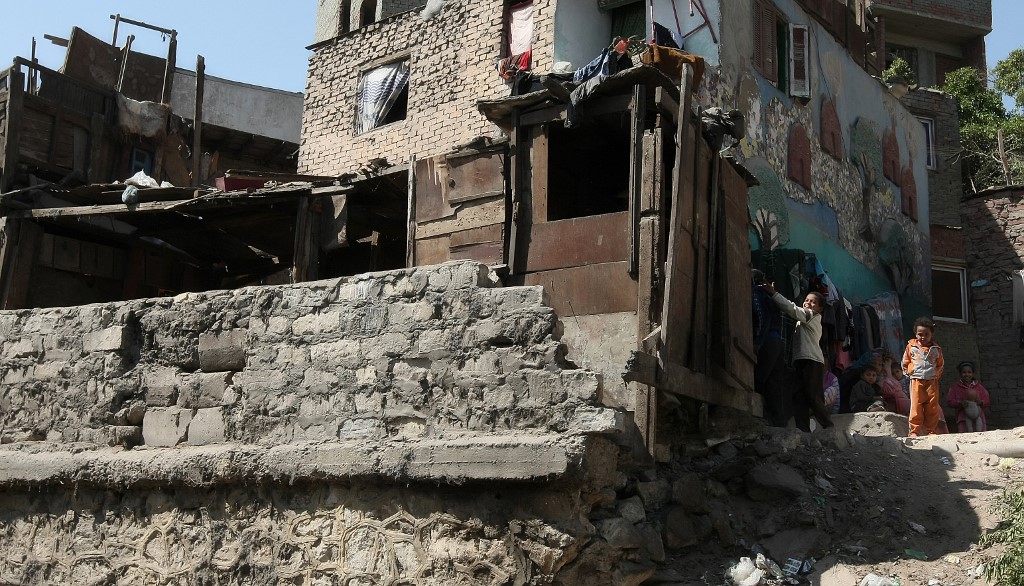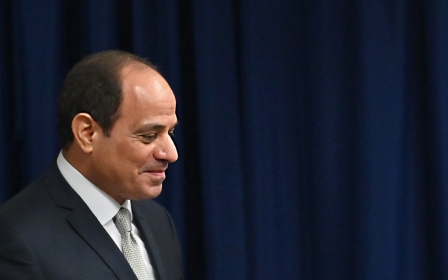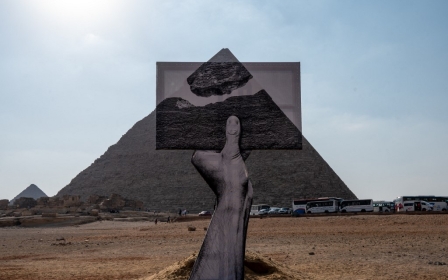Egypt is backing private schools, while public education is starved of funds

Education is a hot political subject in Egypt, and one of the very few public policy areas where opposition voices are heard loud and clear. Even more surprisingly, the government appears to be listening and occasionally responding.
In January, President Abdel Fattah el-Sisi reacted to widespread condemnation of inadequate numbers of teachers by pledging that 30,000 more would be added in each of the following five years. In February, parliament rejected a draft law proposed by the education ministry to fine parents up to 1,000 Egyptian pounds ($64) for truant children.
Members of parliament used the occasion to roundly criticise the ministry, calling the proposal constitutionally dubious and noting that it failed to address the root causes of absenteeism, such as overcrowding, poorly prepared teachers and inappropriate curricula. Also contributing to the problem are high fees for school books and services, combined with stringent enforcement, including preventing students from taking exams if outstanding bills have not been paid.
Education is a convenient, non-threatening subject that allows the public to vent political steam. It is not likely to mobilise the masses
Although public debate over education has intensified in recent days, it has been a hot topic since the 2011 uprising. Calls for improvement were ultimately incorporated into the 2014 constitution, which stipulated in Article 19 that four percent of gross national product (GNP) be spent on education, which must be free and compulsory through high school. But these goals have not been reached. One close observer of the financing of Egyptian education estimates the government is currently spending less than 1.5 percent of GNP on education, about a third of the proportion it spent four decades ago.
The government’s indulgence of tactical political skirmishing over education issues, including criticisms of Education Minister Tarek Shawki, stands in stark contrast to most other areas of public policy, from healthcare, to transportation, to environmental protection, to the actions of security services.
New MEE newsletter: Jerusalem Dispatch
Sign up to get the latest insights and analysis on Israel-Palestine, alongside Turkey Unpacked and other MEE newsletters
This could be because education is a convenient, non-threatening subject that allows the public to vent political steam. It is not likely to mobilise the masses, despite parental demonstrations on various issues. At the university level, mass student protests have been largely absent since Sisi came to power in 2014.
Political suffocation
There may, however, be more cause for this small democratic window than just to provide some much-needed air to those otherwise politically suffocating. After all, the regime is typically unconcerned about the stifling impacts of draconian repression, preoccupied as it is with the need to ensure its effectiveness.
The government’s reaction may be an example of political jujitsu, whereby it encourages the momentum of criticism in certain areas so that it ultimately overshoots the real target. In this case, that target would be the regime’s plans for strategic, fundamental change in the education sector. Public interest is instead diverted to tactical matters, such as improved teacher training, expanded use of tablet computers, the Quran’s role in the teaching of Arabic, and so on.
What is largely missing from well-publicised debates, whether in the media or in parliament, is the government’s apparent intent to reallocate resources from public to private education, and to empower actors other than the ministries of education and higher education to design and supervise education. Chief among those to whom the regime is assigning these educational duties are the military and various bodies that report to the president, including the sovereign wealth fund.
The case of education reflects the regime’s broader strategies to marginalise and downsize the civil service; to privatise public services and state-owned enterprises; to empower individuals and institutions at the apex of the military regime over public services and productive sectors of the economy; and to facilitate growing inequality. All of this is done in the name of development.
Egypt’s authoritarian, exclusionary model naturally threatens a backlash from those marginalised by it. It must thus be coupled with enhanced capacities to deter or contain such reactions, evident in the beefing up of security forces alongside wanton disregard for human rights.
Geographical partitioning
These precautionary measures are also manifested in the geographical partitioning of the country into gated communities inhabited by regime beneficiaries on the one hand, and on the other, squalid urban and rural areas populated by the disconnected - in some cases, quite literally from water and power supplies - who are more or less left to their own devices. They are overwhelmingly engaged in informal employment, lacking the education, skills and connections to secure permanent contract jobs.
These marginalised areas pose latent threats to the established order, so considerable attention is given to their surveillance and, if need be, physical control. An example of the latter are the recently constructed freeways slicing through densely settled urban areas, seemingly modelled on Emperor Napoleon III’s 19th-century Baron Haussmann-designed boulevards. They provided access for the police and military to the city’s historically rebellious traditional quarters.
Presumably, their contemporary Egyptian equivalents will facilitate the movement of armoured vehicles, thus overcoming the access problem that confounded authorities when trying to subdue demonstrators in 2011.
The implications of Sisi’s and the military’s development model are profound, especially for education. Expansion of public education was a vital component of former president Gamal Abdel Nasser’s social contract, of his cultivation of a middle class, and of his efforts to build an economically independent Egypt.
To a considerable extent, memories of that era - and hopes for a similar future - inspired the 2014 constitutional article. Yet, such hopes are inconsistent with Sisi’s development model.
Abysmal score
The World Bank’s newly created Human Capital Index, comprising a mix of education and health measures, is a manifestation of the prevailing view that human capital, for which education is vital, is as important as financial capital for growth. On that index, Egypt scores abysmally low.
An Egyptian boy or girl now averages 11.5 years of school by his or her 18th birthday. If corrected by performance as measured by globally standardised tests, “learning-adjusted years of school” are only slightly more than half that, at 6.5 years. Almost half the time the average Egyptian student spends in school, in other words, is wasted.
Things are likely to get worse for public education, if only because of the magnitude of the challenge
According to these “harmonised test scores”, students in Egypt score 356 on a scale where 625 represents advanced attainment and 300 represents the minimum - the lowest recorded score measured in North Africa. According to the index, “a child born in Egypt today will be 49 percent as productive when she grows up as she could be if she enjoyed complete education and full health”. The World Economic Forum recently ranked the skills of Egypt’s graduates 133rd out of 141 countries evaluated.
And things are likely to get worse for public education, if only because of the magnitude of the challenge. Annually, almost two million students join the present crop of 26.3 million students attending public schools and 2.5 million attending private schools, an overall increase of eight percent per year.
The average classroom density in public schools has increased from 46 students in 2015 to 55 today, and some classes have more than 100 students. Abdel-Hafez Tayel, who leads the Egyptian Center for the Right to Education, recently told Al-Monitor that 20,000 more schools need to be built to address this issue.
Public versus private
At the same time, 85 percent of the education ministry’s budget goes to teachers’ salaries. There are 1.17 million teachers in the public system, about a quarter of a million short of the number needed. This is due to increased student numbers and teacher retirements, along with an absence of permanent contracts to attract applicants, as part-time contracts pay as low as $20 monthly.
Students from even relatively poor families are voting with their feet, leaving public schools for a wide range of private schools. Presumably, this shift would have been even more dramatic, if more parents had the necessary means. But the economic effects of the Covid-19 pandemic, combined with broader economic stagnation, has resulted in considerable backward movement to public schools, as families are forced to economise.
The relative paucity of government resources committed to public education stands in stark contrast to the largesse bestowed on private. The sovereign wealth fund, for example, last year placed more than half a billion Egyptian pounds ($27m) in the investment bank EFG Hermes’ for-profit education account, which invests in the construction and operation of private schools.
The government estimates that in 2022, investment in private schools will reach some 8.9 billion Egyptian pounds ($481m), compared with 6.5 billion ($351.82m) for public schools. As analyst Mohamed Ramadan notes, this means “that 10 percent of students in private education receive more investments in building schools than the 90 percent in public schools”. Shawki has gone so far as to challenge the constitutional provision for free education, saying that this principle “needs reconsidering”.
Sisi’s Egypt is cleaving the population into cadres and constituents on the one hand, and those left behind on the other. The overhaul of the educational system is intended to facilitate that bifurcation.
While it may create a reasonably well-educated elite capable of performing the technical tasks allocated to them by government, it will inevitably also create a vast pool of uneducated and under-equipped proletarians. The labour force participation rate, at 42 percent, is too low to propel broad-based economic growth.
According to the Economist, more than 80 percent of working-age adults “are either sitting at home or toiling in low-paid, insecure jobs”. The increasingly divided educational system will likely further depress labour force participation in the face of population growth and economic stagnation.
Antagonisms between the favoured few and disfavoured many are bound to intensify. The regime is betting that its coercive forces, combined with loyal support from the beneficiaries of its largesse, will be able to stand against any and all challengers, including those arising from the country’s woebegone public schools. This is a risky bet.
The views expressed in this article belong to the author and do not necessarily reflect the editorial policy of Middle East Eye.
Middle East Eye delivers independent and unrivalled coverage and analysis of the Middle East, North Africa and beyond. To learn more about republishing this content and the associated fees, please fill out this form. More about MEE can be found here.








